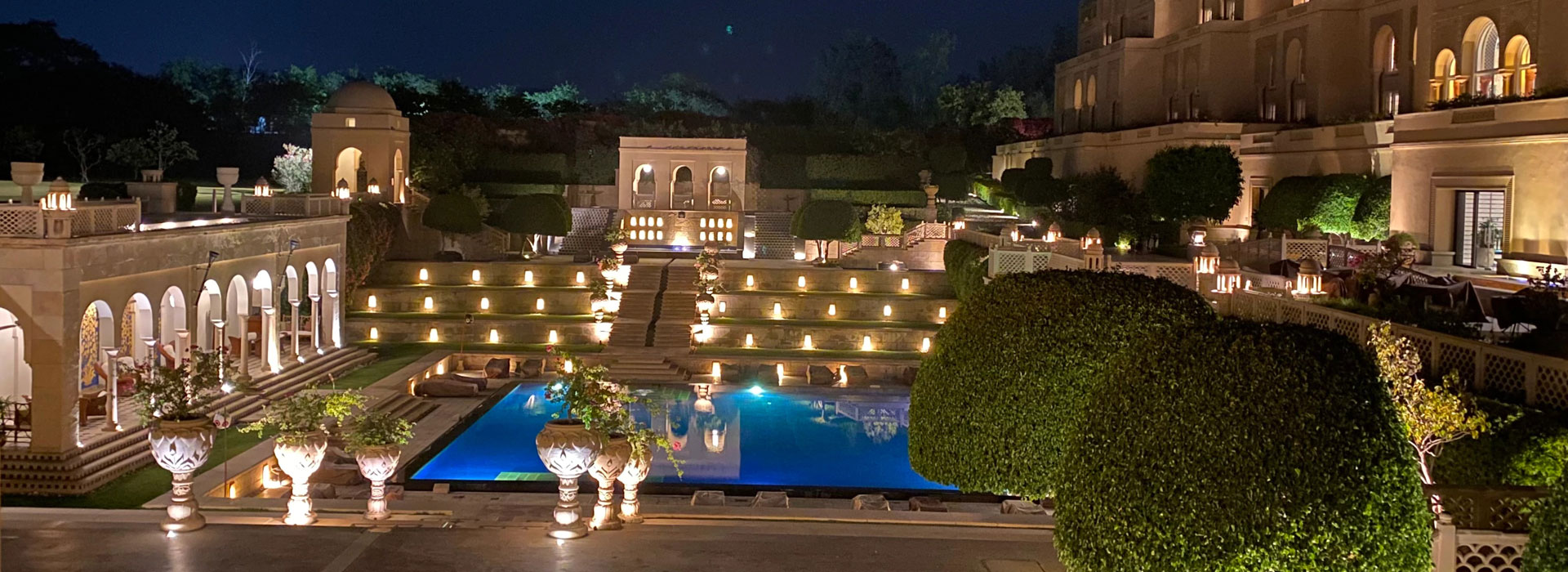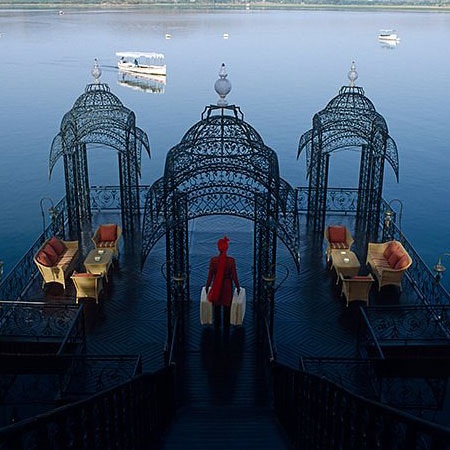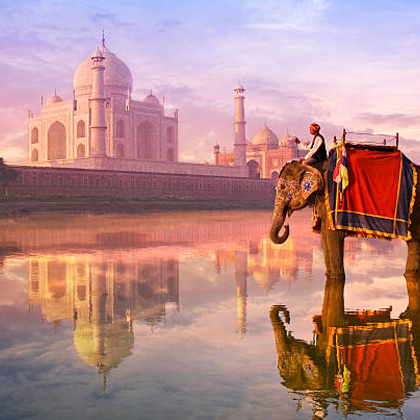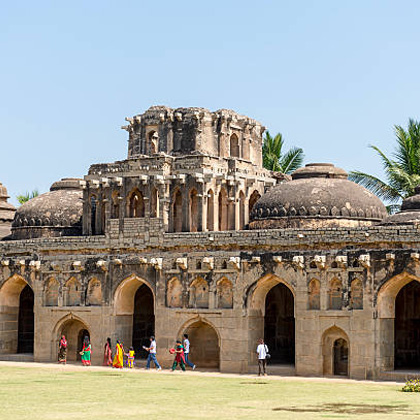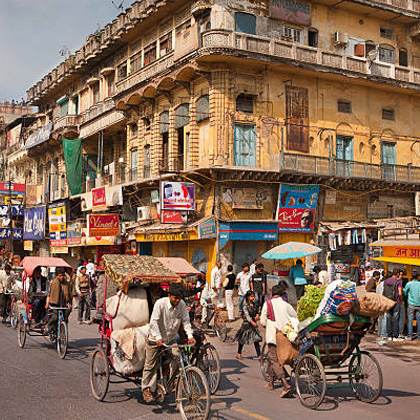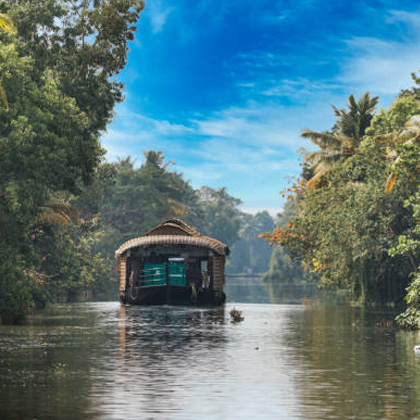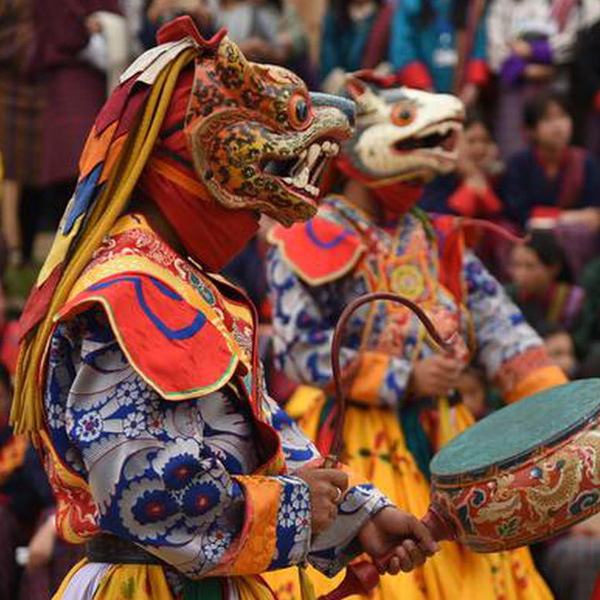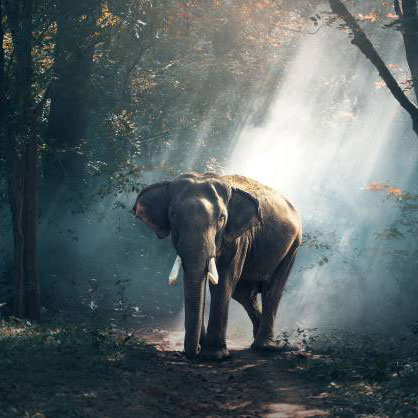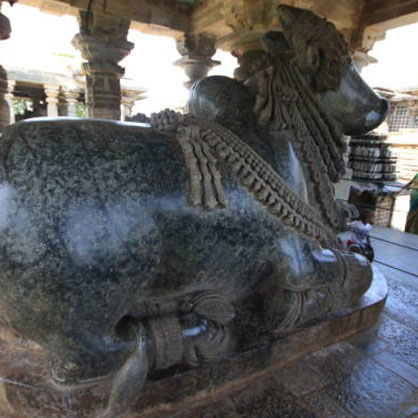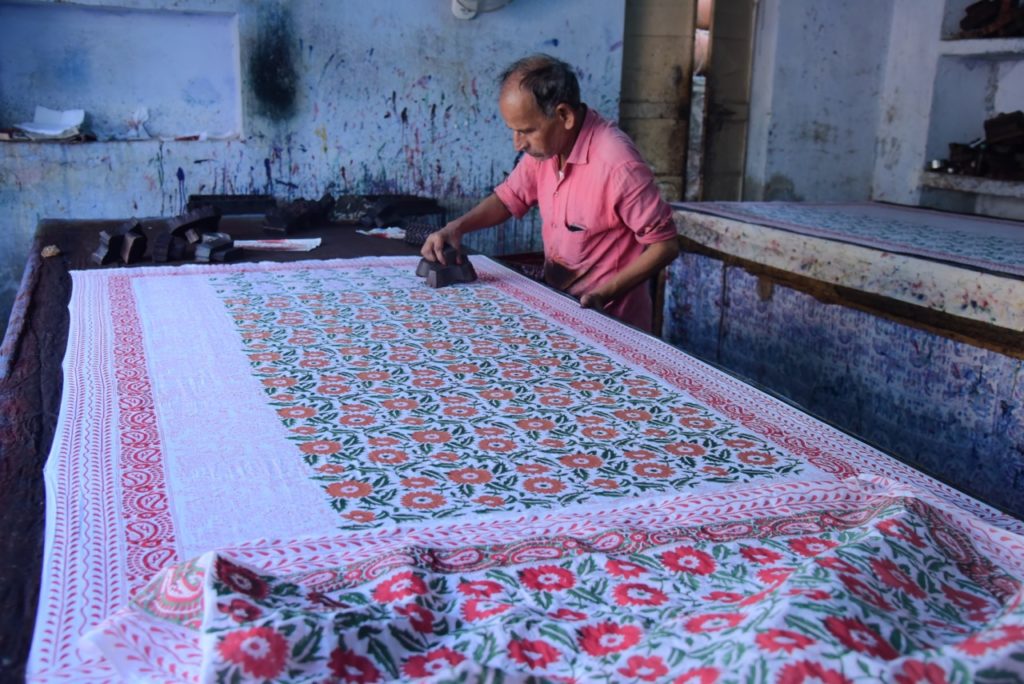
At the heart of the Pink City, stands the impressive Jaipur City Palace.
Traffic goes around it like a tide, ebbing and flowing at different times
of the day; humanity spawns and fades in masses in its surroundings,
and the Pink City boundaries keep moving further and further away from
it each year. In the midst of the expansion, traffic, and chaos, the Jaipur
City Palace stands still and does exactly what it was intended for; awe its
visitors and act as a residence of the erstwhile royal family of Jaipur.
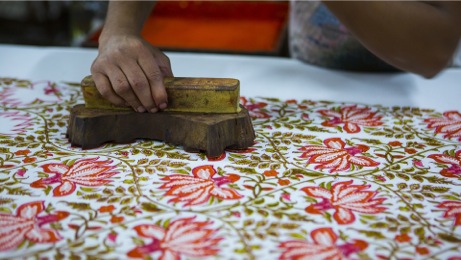
Nearly everybody who visits India goes to Jaipur and every Pink City tourist experiences a glimpse of royalty at the City Palace. Though once it permitted the entrance of commoners only upon invitation, nowadays this hallowed experience can be felt only at the exclusive Royal Grandeur Tour during which the “restricted for the royal family” areas are shown. All luxury Indian tours include this experience in their Jaipur itinerary and it is indeed very special.
The creators of the Jaipur City Palace
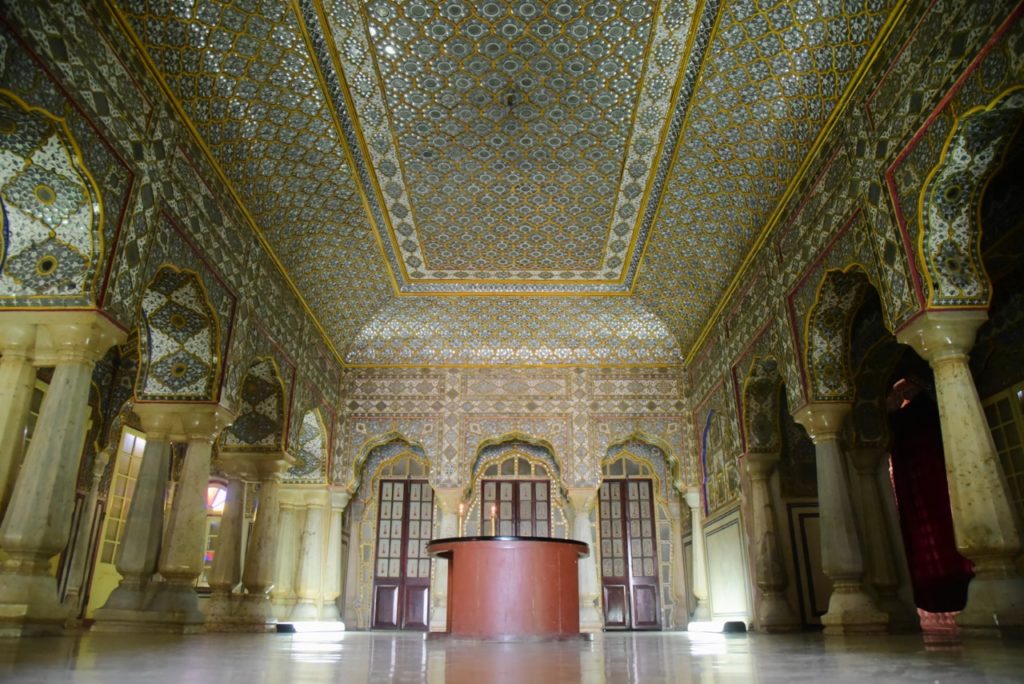
A complex of courtyards, gardens, and buildings, the construction of the
Jaipur City Palace was initialized by Maharaja Jai Singh II in the 1720s.
The whole complex, however, expanded and adapted over the centuries,
thus becoming an amalgamation of different styles of the eras. The City
Palace is originally the creation of a Bengali architect called Vidhyadhar
Bhattacharya who designed it based on the rules of Vastushastra. The
Jaipur royal family has flourished within that complex for centuries and they occupy a part of it as their residence. Since they use the grand
Tripolia Gate on its southern side for formal occasions, the palace visitors enter the City Palace Jaipur complex through a modest gate called Virendra Pol on the eastern side. This gate directly opens into the first of the two main courtyards which have the elegant Mubarak Mahal standing in its center.
The museums of the Mubarak Mahal
The Mubarak Mahal or the Welcome Palace was earlier used as a
reception hall for visiting dignitaries. It was built in the late 19th century by Maharaja Madho Singh II, who was known for his cordial relationships with the other princely state rulers and the British. It is a multi-arched and colonnaded structure that was designed by the architect Sir Swinton Jacob. Today, the Mubarak Mahal houses the palace museum’s impressive textile collection which displays some of the elaborately embroidered and brocaded royal garbs. On the northern side of the courtyard, lies the Armoury with its vast array of beautifully engraved, deadly weapons. It is one of the finest royal weapon collections in Rajasthan.
The world’s largest silver vessels at Diwan-i-Khas
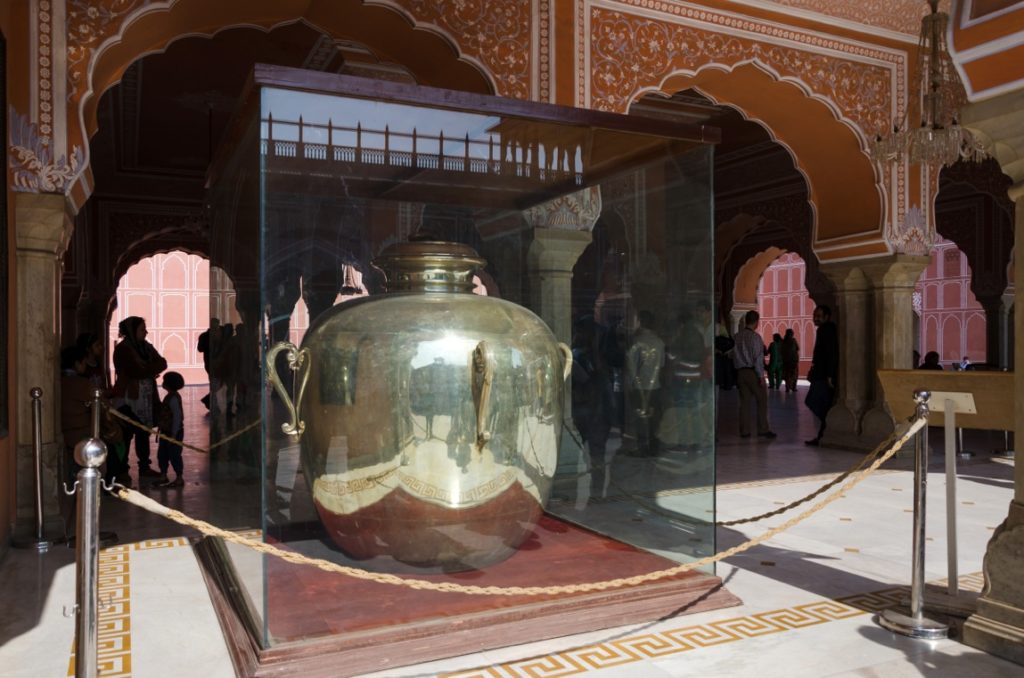
The open courtyard known as Sarvatobhadra lies between the Armoury and the Diwan-i-Am art gallery. At its center is a beautiful pink-and-
the white, marble-paved gallery that was used by the Maharaja, in olden days, to hold meetings with his ministers. Known as the Diwan-i-Khas
or the Hall of Private Audience today it famously displays two enormous
silver vessels, which were traveling items of the Maharaja Madho Singh
II. He was a devout Hindu king, who carried holy Ganges water in them to England when he was invited for Edward VII’s coronation in 1902.
Each standing 1.6m tall, these vessels are supposedly the largest silver
objects in the world.
Secrets of the Diwan-i-Am of City Palace
Being a centuries-old royal residence, the Jaipur City Palace naturally holds a lot of secrets in its bosom. The exhibits of the Diwan-i-Am Art
The gallery is some of the most sacred of all its secrets. Exhibits of this art gallery which is within the lavish Diwan-i-Am or Hall of Public The audience includes a copy of the entire Bhagavad Gita handwritten in a
tiny script and miniature copies of other holy Hindu scriptures. They were made painstakingly small so that in the event of an attack from zealot Mughal armies, the scripts could be easily concealed.
Pitam Niwas Chowk and the famous four seasons gates

The Pitam Niwas Chowk is located towards the palace’s inner courtyard.
Here there are four beautifully decorated gates representing four
different seasons – the Peacock Gate depicts autumn, the Lotus
Gate signifies summer, the Green Gate represents spring and the Rose
Gate embodies winter. Four Hindu deities preside over each of the four
gates and these are some of the most photogenic spots of the Jaipur City
Palace. Collectively known as the Ridhi Sidhi Pol, these gates provide access to the private Chandra Mahal.
Royal Grandeur tour of City Palace Jaipur starts here
Conducted by a palace staff, the Royal Grandeur is a voyeur’s delight. It
takes the visitors to the exalted restricted royal family only areas and
provides them with glimpses of a sumptuous life. This tour includes
private quarters like the Chandra Mahal, Sukh Niwas, Chhavi Niwas,
Shobha Niwas, Sri Niwas, and Mukut Mandir.
The romantic Chandra Mahal
Chandra Mahal or the Moon Palace is as romantic as it sounds. Built-in
seven floors, this private quarter has sweepings views of the city from its rooms. With each floor named specifically according to its purpose,
Chandra Mahal houses many rare paintings, mirror work murals, floral decorations, and family heirlooms. There is also a private museum
which has the family’s carpets, precious manuscripts, and other personal
use items on display.
Beautiful blue Sukh Niwas

The iconic Sukh Niwas or the Hall of Rest is the most beautiful floor of
Chandra Mahal. Painted in Wedgewood blue and embellished with white lining, Sukh Niwas was used as the drawing and dining space of the Maharaja. This space provides beautiful views and the open plan allows sunlight to pour in, making Sukh Niwas literally glow. Chandra
Mahal is set against a decorative lake and landscaped gardens and the jharokhas and rooftop pavilion provide commanding city views.
Chandra Mahal’s three floors of beauty
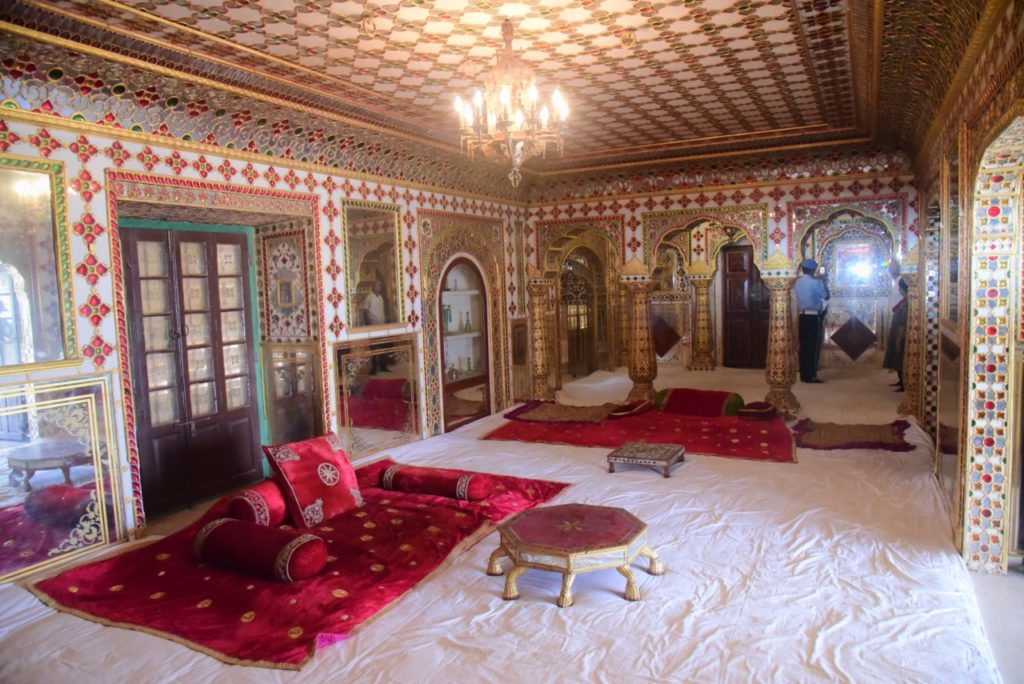
The three floors of Chandra Mahal which are most famous for their
beauty is the Rang Mandir is a room decorated with mirrors and
Shobha Niwas or the Hall of Beauty is completely inlaid with mica and
gold leaves. The Chhavi Niwas or the Hall of Images was a monsoon
retreat of the Maharajas and the elegant Sri Niwas is on the sixth floor.
The crowning Mukut Mandir is a rooftop temple which symbolically
displays the religious zeal of the royal family. From the top, all of Jai
Singh II’s creations can be seen encircling the City Palace like necklaces.
Those famous rose-pink walls envelop the late king’s dream city in a
tight embrace and Jantar Mantar and the incredible Hawa Mahal stand close to each other. Old Pink City buildings of the commoners,
descendants of the king’s subjects also lie in grids and you get a feeling
of looking at the blueprint, that was the brainchild of this talented artistic king. Only the mighty Aravallis stand aloof untouched by the king’s dreams and unmarred by the expansion of the modern Jaipur City.

 Menu
Menu